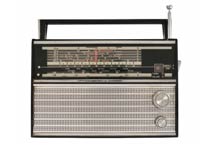Analog Devices, Inc. (ADI) has announced a breakthrough RadioVerse System-on-Chip (SoC) series, providing radio-unit (RU) developers with an agile and cost-effective platform to create the most energy efficient 5G RUs in the industry. The new SoC series provides advanced RF signal processing with expanded digital functionality and RF capacity that greatly improves 5G RU performance…
Rohde & Schwarz and Quectel team up to accelerate 3GPP validation for vehicles
Rohde & Schwarz, in partnership with Quectel, recently announces the verification of selected 3GPP test cases based on a system with its R&S CMW500 wideband radio communication tester against a Quectel AG15 C-V2X module. Cellular-V2X (C-V2X) is a key technology that’s designed to improve road safety and accelerate autonomous driving in the coming years. Specifically,…
Microchip launches first, single-chip network synchronization 5G solution
The latest 5G technology requires time sources to be synchronized throughout a packet-switched network 10 times more accurately than 4G requirements. Microchip Technology now makes it possible to achieve 5G performance with the first single-chip, highly integrated, low-power, multi-channel integrated circuit (IC), coupled with the company’s widely adopted and reliable IEEE 1588 Precision Time Protocol…
DEKRA selects Keysight’s test solutions to verify 5G devices
Keysight Technologies, Inc., a technology company that delivers advanced design and validation solutions, announced that DEKRA, a global test organization, has selected Keysight’s 5G and internet of things (IoT) test solutions to expand 5G new radio (NR), Wi-Fi 6, and Bluetooth 5 device regulatory compliance services. Radio-frequency (RF) regulatory testing, mandated by country-specific organizations, ensure…
NXP and Jio partner to expand 5G in India
NXP Semiconductors and Jio Platforms Ltd. (JPL) have announced a collaboration to implement a 5G NR O-RAN, small-cell solution that incorporates NXP’s Layerscape family of multicore processors. The combined solution will power new RAN networks that will deliver high performance, enabling a wide range of 5G use cases for broadband access as well as Industry 4.0…
RADAR (Radio Detection and Ranging)
If you have sometimes experienced the reflection of a sound due to the presence of a sound reflecting object like a canyon/ cave, etc. you have in a way experienced how radar functions. When you shout near towards a valley or a mountain, the reflection of a sound, i.e., the echo comes back. The time an echo requires to come back can be used to estimate the distance of the reflecting object, provided the speed of sound in air is known. Radar functions in a similar manner to find out the location of the reflection object using RF waves. Radar is an acronym for RAdio Detecting And Ranging. The name itself suggests that the radars are used to detect the presence of object and determine its range, i.e., distance and bearing, using radio frequency waves.
Invention Story of Radio
During 1860s, James Maxwell, a Scottish physicist forecasted presence of radio waves. And in year 1886, Heinrich Hertz showcased projection of swift variation of the electric current into space in form of radio waves. Twenty years after invention of telephone, music was set down on telephone line and Guglielmo Marconi was responsible for the radio signals. Fascinated by Hertz’s discovery of the radio waves, he realized that it could be used for receiving and sending the telegraph messages, referring to it as wireless telegraphs.







